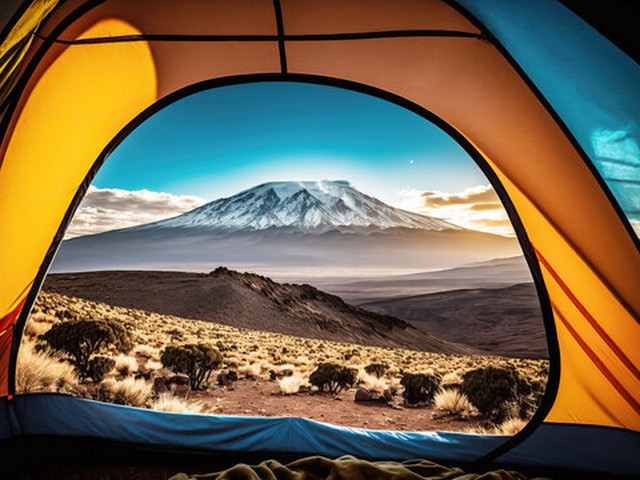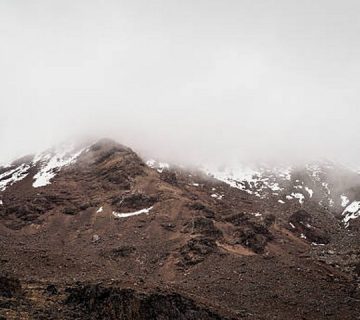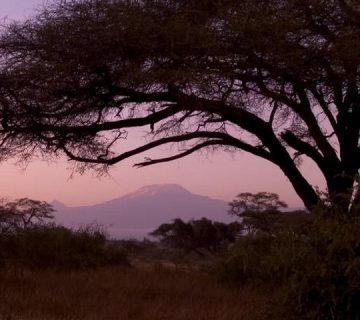How To Minimize Health Risks During Kilimanjaro Climbs
Ascending the majestic peaks of Mount Kilimanjaro is a dream for many adventurers worldwide. It’s not just a climb; it’s a journey through various ecological systems — from lush rainforests to arid alpine deserts to icy summits. However, as thrilling as it is to conquer the highest peak in Africa, ensuring a safe and healthy climb is paramount. At Kilimanjaro Centre for Trekking and Ecotourism (KCTE), we believe that your health is as crucial as your enthusiasm for the climb. In this comprehensive guide, we’ll explore effective strategies to minimize health risks during your Kilimanjaro adventure.
Understanding the Risks: Why Preparation is Key
Before delving into the preventive measures, it’s crucial to understand the health risks associated with high-altitude climbing. The main challenges include altitude sickness, extreme weather conditions, and physical exhaustion. Being prepared can significantly reduce these risks and enhance your climbing experience.
Acclimatization: Your Best Ally
Start Slow to Go Far
Acclimatization is the gradual adjustment of your body to changes in its environment, allowing you to perform better under reduced oxygen levels. It is, perhaps, the most crucial factor in minimizing health risks on Kilimanjaro.
Pre-climb acclimatization: If possible, spend a few days at a high altitude location before your climb to familiarize your body with less oxygen.
Climb slowly: Kilimanjaro is not a race. Taking your time helps your body adjust, reducing the likelihood of altitude sickness.
Fitness: The Foundation of a Safe Climb
Tailored Training Program
Physical preparation goes a long way in ensuring you’re ready for the demands of Kilimanjaro.
Cardiovascular exercises: Engage in activities like running, swimming, or cycling to boost your stamina.
Strength training: Focus on your legs, core, and back which you will rely on during the climb.
Practice hikes: Regularly hike trails with varying inclines to simulate Kilimanjaro’s terrain.
Nutrition and Hydration: Fueling for the Summit
Eat Well, Climb Well
Your body needs the right fuel to tackle the challenges of Kilimanjaro.
Balanced diet: Increase intake of carbohydrates for energy, alongside proteins and fats.
Hydration: Drink at least 3-4 liters of water daily during the climb to prevent dehydration.
Gear and Clothing: Dress for Success
Right Gear, Right Experience
The proper gear can protect you from the elements and improve your overall safety.
Layered clothing: Prepare for varying temperatures by layering clothing.
Quality footwear: Invest in good hiking boots and socks to prevent blisters and provide ankle support.
Protection accessories: Sunglasses, sunscreen, and a wide-brimmed hat are essential to shield you from UV rays.
Health Checks and Travel Insurance: Be Prepared
Safety First
Ensure you’re medically cleared for the climb and have appropriate travel insurance.
Medical check-up: Visit your doctor for a full medical examination and discuss vaccination requirements.
Travel insurance: Choose a policy that covers high-altitude trekking and medical evacuation.
Mental Preparation: A Positive Mindset
Climb with Confidence
The mental aspect of climbing Kilimanjaro is as important as the physical preparation.
Stay positive: Maintain a positive but realistic outlook throughout your climb.
Mindfulness and meditation: Techniques like these can enhance your mental stamina.
Choosing the Right Guide: Kilimanjaro Centre for Trekking and Ecotourism (KCTE)
Expert Guidance, Unforgettable Experiences
At KCTE, we pride ourselves on providing expert guides who prioritize your safety and health. Our guides are trained to recognize and manage altitude sickness and other health risks. By choosing KCTE, you’re not just choosing a tour operator; you’re choosing a partner who will ensure that your journey to the roof of Africa is safe, enjoyable, and unforgettable.
FAQs: Your Questions Answered
What is the best time of year to climb Kilimanjaro?
The best times to climb Kilimanjaro are during its dry seasons, from January to mid-March and from June to October.
How can I prevent altitude sickness?
Prevent altitude sickness by acclimatizing properly, ascending slowly, staying hydrated, and consulting with your guide on the best practices.
What should I eat during the climb?
Opt for light, energy-boosting meals rich in carbohydrates. Avoid heavy meals that are difficult to digest.
How fit do I need to be to climb Kilimanjaro?
You need to be in good physical health. Cardio and strength training can greatly enhance your climbing ability.
Ready to Conquer Kilimanjaro?
Embarking on a Kilimanjaro climb is thrilling and, with the right preparations, can be one of the most rewarding experiences. At Kilimanjaro Centre for Trekking and Ecotourism (KCTE), we are committed to ensuring your adventure is as safe as it is exhilarating. Remember, minimizing health risks starts with choosing the right partner for your climb. Ready to take the first step towards the summit? Contact KCTE today, and let’s make your Kilimanjaro dream a reality. Climb safe, climb smart, climb with us!




